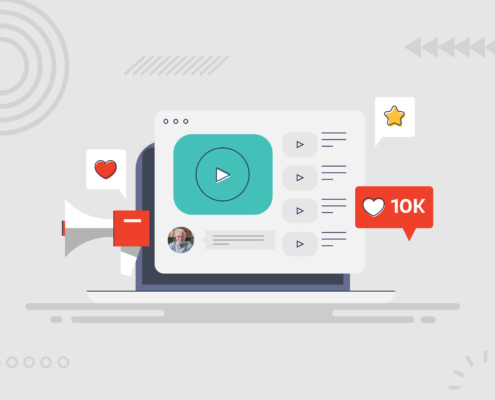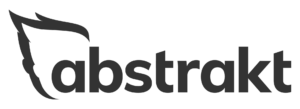

Picture this: you have the perfect lead in the sales pipeline. The company is qualified, you have the right key decision-maker and all of their contact information, they have a need for your company’s products or services, etc. But they’re impossible to reach over the phone. We’ve all been there, right? Isn’t it the worst?
All you want to do is pitch them your product or service, but you can’t get them to pick up the phone. Are you just going to let them slip through your fingers? Absolutely not. So how can you get past this barrier? Have you tried sending them a single-page sell sheet?
Sell sheets are great pieces of marketing collateral that you can implement into your email marketing efforts to catch the attention of leads when they don’t answer your cold calls. Throughout this blog, we’ll cover the following:
What Is a Sell Sheet?
A sell sheet (also known as a sales sheet) is a one-page marketing collateral asset that gives readers specific information about your company or the product or services you offer.
You know how people say a square is a rectangle, but a rectangle isn’t always a square? Well, the same idea reigns true for sell sheets and infographics. While sell sheets are often compared to infographics, there are significant differences. Infographics are marketing collateral assets that give viewers information in a visually appealing format. Ideally, a reader should understand what an infographic is about without reading a significant amount of copy.
On the other hand, a sell sheet contains more text and is designed to give readers in-depth information about a product, service, or concept. While they’re also visually appealing, they have fewer graphics to explain how something works.
Let’s say you’re an MSP that wants to present industry statistics about network security. In this case, you would want to use an infographic to make this data easily digestible for readers. However, if you’re going to explain the onboarding process your company follows for new IT clients, a sell sheet would be the better marketing collateral option.
Why Are Single-Page Sell Sheets Important for Business Growth?
If used correctly, sell sheets will support your sales team. One of the coolest things about sell sheets is that they can be used in many ways—both internally and externally.
When sell sheets are used internally, they are often repurposed as training material to help onboard new sales development representatives (SDRs). These internal sell sheets are single-page documents that share your target market research, products or services worth highlighting, or common objections your SDRs may encounter and how to overcome them.
While sell sheets can be used internally, they’re more often known for their impact on sales and marketing efforts. Sell sheets are essential sales enablement materials because they encourage leads in the sales pipeline to learn more about your company and what you have to offer. They can be brought to sales appointments set by SDRs or integrated into email marketing campaigns to guide potential buyers into the next stage of the buyer’s journey.
How To Design a Sell Sheet for Potential Customers
You’re probably saying, “Okay, we get it! Sell sheets are awesome lead generators! But how can I make a sell sheet that gets leads to the end of the sales funnel?” Well, lucky for you, we’re in a sharing mood today! Here are some crucial design elements you should be aware of as you create your sell sheets:
Include Your Company Name and Logo
Sure, this might be obvious—but it definitely shouldn’t be forgotten about. While you want to present readers with crucial information, you don’t want them to forget who’s providing it. Including your company name and logo associates your brand with the information, making you a reliable source. If readers see more of your content at networking events or online, they know it’s from a trusted industry thought leader.
In addition to your company name and logo, your sell sheet colors should align with your company’s brand. Whether it’s copy or full-color visuals, using your brand’s colors establishes that this sales enablement asset belongs to your company and cannot be duplicated by a competitor. To make sure all your sell sheets align with your brand, it may be beneficial to develop a sell sheet template your designers can use to input new information.
Make the Purpose of the Sell Sheet Clear
A reader should know what a sell sheet is about from the get-go, whether it’s by the image displayed or the header kicking off the sell sheet. Additionally, each component on the sell sheet should be clear and aligned with one another. For example, if the sell sheet for your roofing company is about the benefits of TPO roofing systems, you shouldn’t have a graphic showing asphalt shingles. This could not only confuse the reader, but also reduce company credibility.
Write a Compelling Headline
How many times do you headline hunt for the information you’re looking for? Like blogs, the headline of a sell sheet sets the tone for the rest of the content. As you brainstorm a headline, make sure it’s catchy yet relevant to the message you want to convey. If your headline doesn’t align with the concept of the sell sheet, you can quickly lose readers and overall brand credibility.
If you’re stuck trying to think of a compelling headline for your sell sheet, consider:
- What the sell sheet is about
- The pain points your target market faces
- Your company’s mission (or tagline)
When you consider these components, you can come up with a headline that encompasses your company values along with the wants and needs of your target market.
Start With an Introductory Paragraph
After your attention-grabbing headline should come a brief paragraph that introduces the reader to what the sell sheet is about. This short text box gives readers more insight into your company and your reputation about the specific product, service, or concept you’re highlighting. In this first paragraph, establish credibility by explaining why the reader should trust your information.
Use Data To Support Your Claims
Many people need data to help them make a decision. While you may make some convincing arguments in your sell sheet, do you have any data to back them up? Using information to support the sell sheet gives prospective customers more reason to trust your business.
Make Data Easy To Digest
You can have the most accurate and intriguing statistics in the industry, but does your target market easily understand them? Even if a statistic sounds impressive to you, it may not to someone outside of the industry. As you present data in your sell sheets, you need to make it visually appealing and easy to digest by key decision-makers.
Present a Clear Call-to-Action
What do you want readers to do with the information you’ve just provided them? When you make a sell sheet, you need to include a call-to-action (CTA), so they know what their next steps should be.
A CTA for your sell sheet should align with the reader’s current stage in the sales cycle. For example, if a reader is in the awareness stage of the buyer’s journey, you may want a CTA that directs them to your website, blog, or social media profiles to learn more about your company and what you have to offer.
On the other hand, if a potential buyer is in the consideration stage of the buyer’s journey, you may want a CTA that encourages them to contact your company. It’s also crucial to include your company’s contact information, including a phone number and an email address.
Key Takeaways
Single-page sell sheets are great pieces of marketing collateral because they can be used in a wide range of sales scenarios, from email marketing to sales presentations. However, it’s important to remember that there are right and wrong ways to design sell sheets. Even if you’re not a graphic design expert, there are specialists who can help you create sell sheets that will guide your leads down the sales funnel.
Abstrakt Marketing Group offers B2B companies graphic design as a service, so you have the best sales enablement materials for your business growth efforts. When you’re ready to optimize the way you promote your business, contact the sales and marketing experts at Abstrakt Marketing Group!




